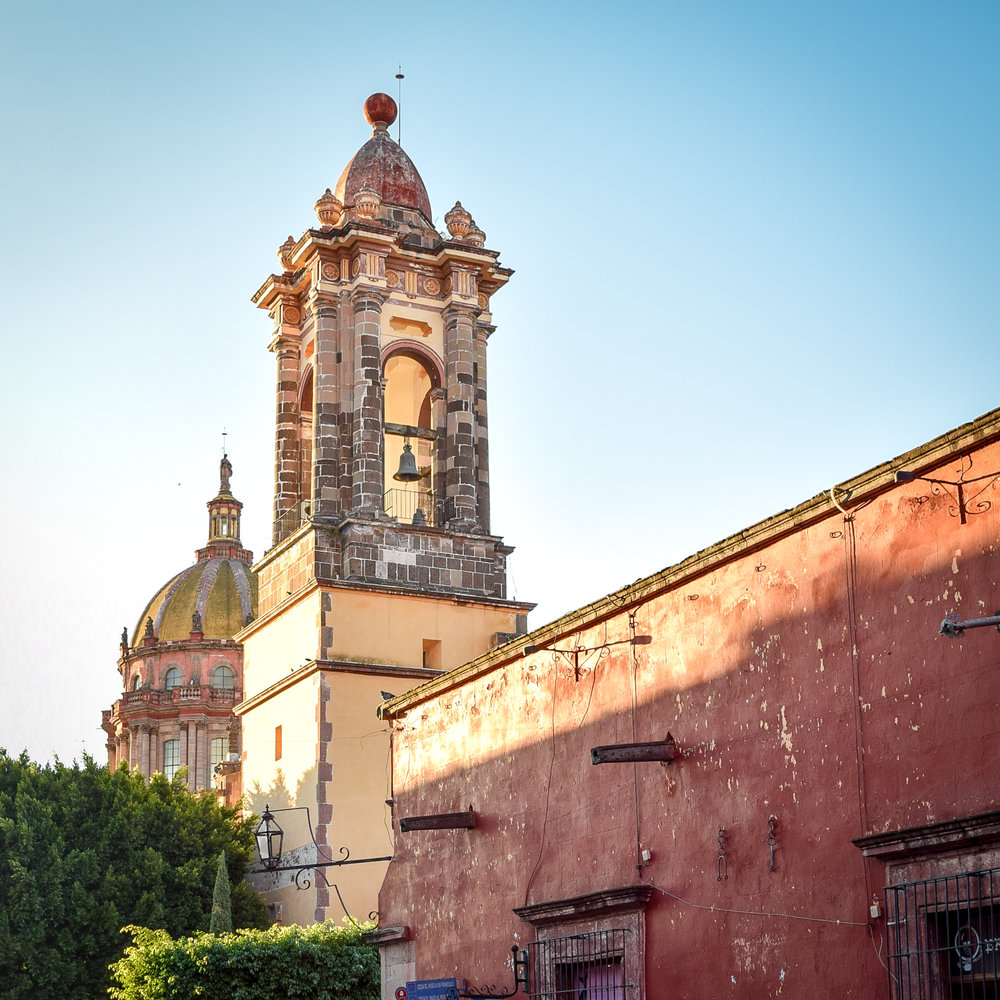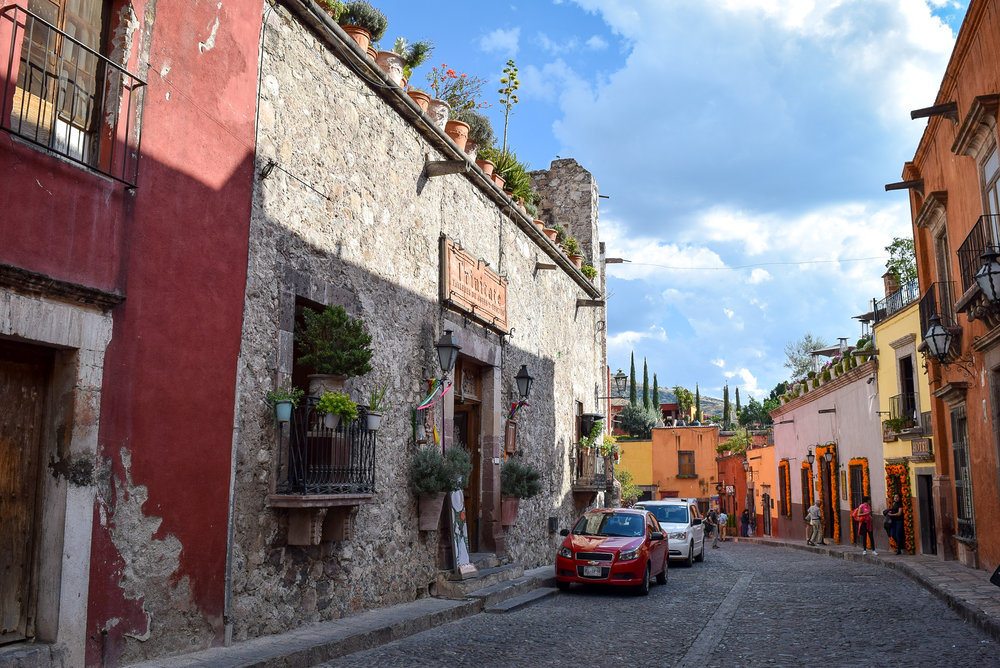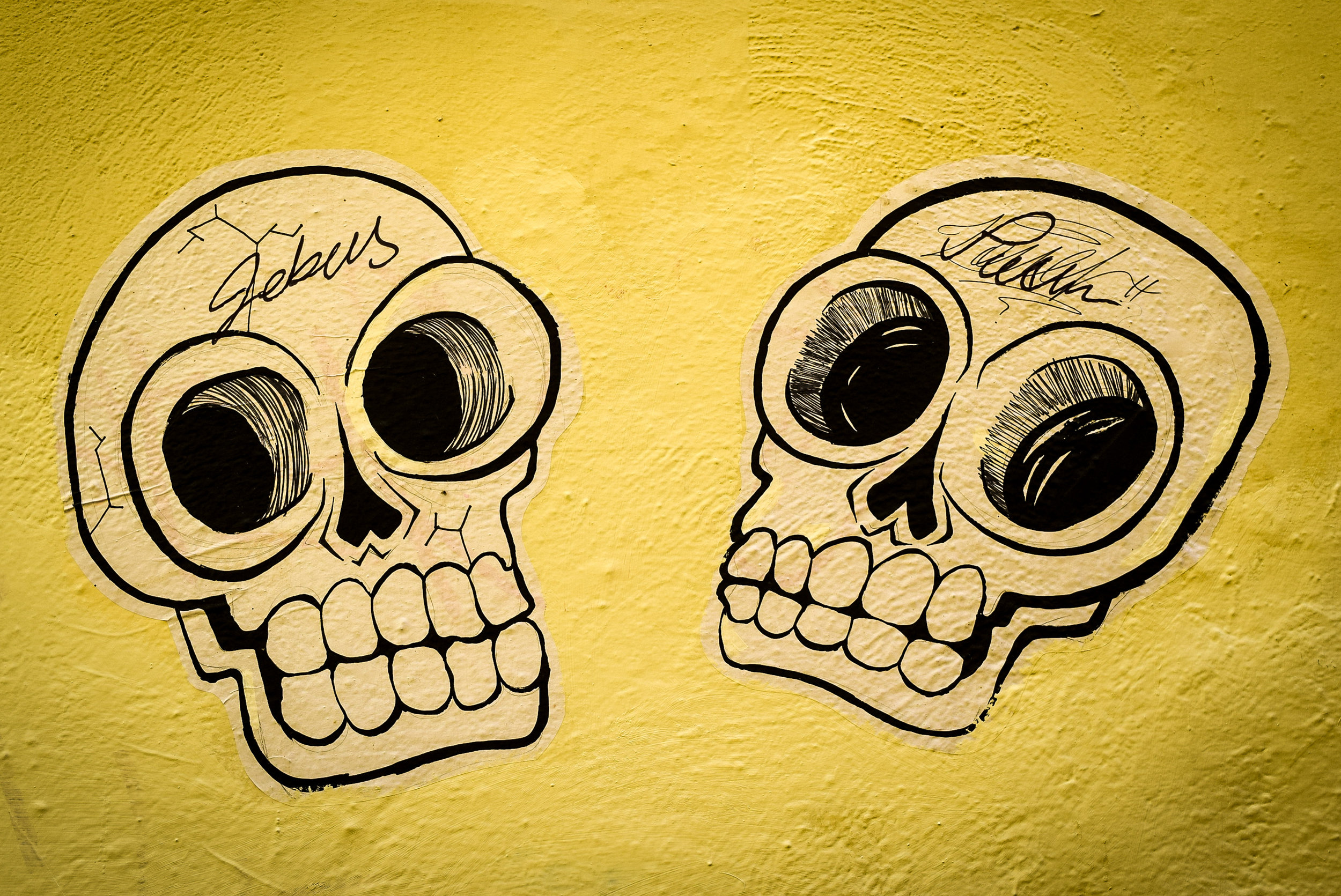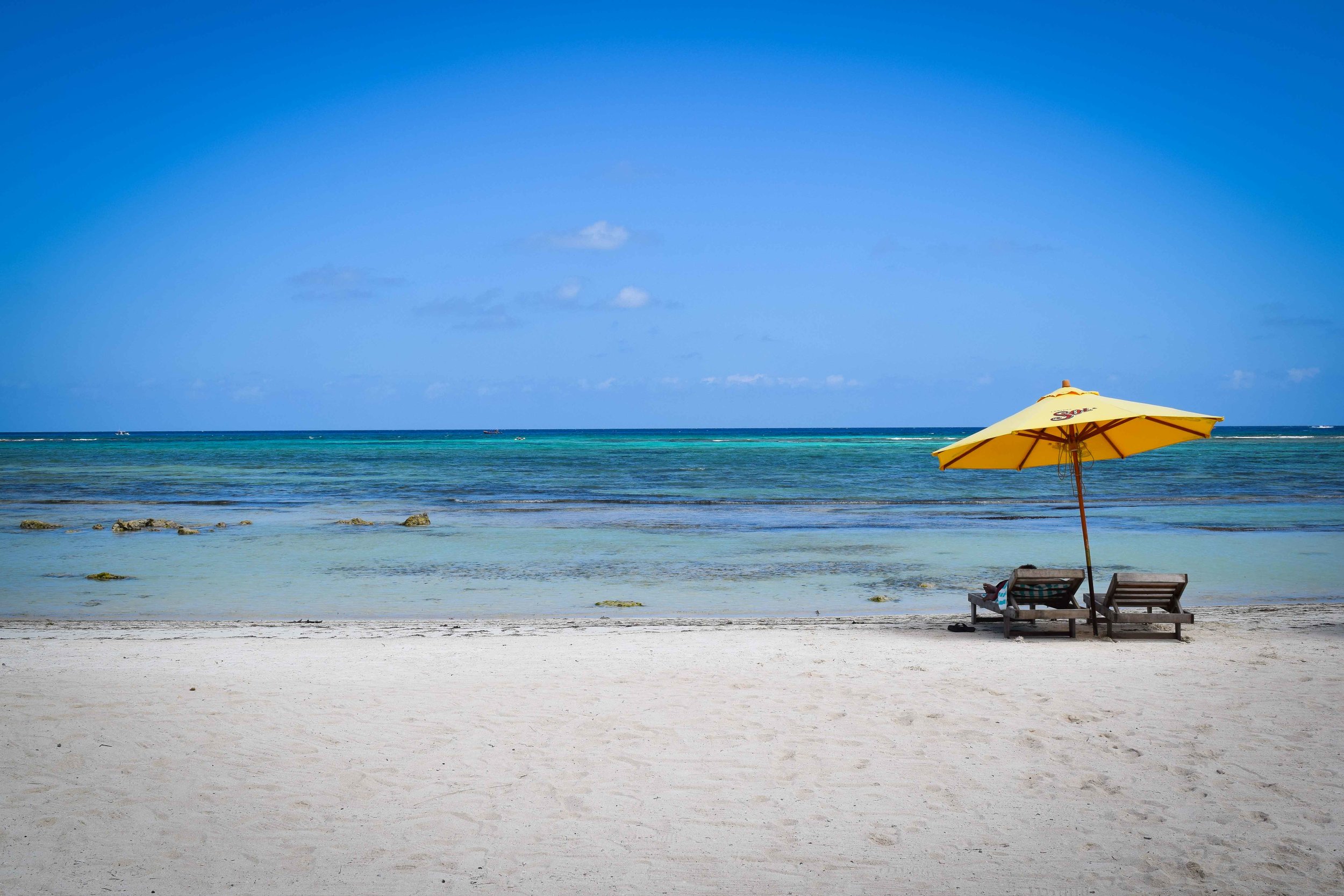San Miguel de Allende: A Visitor's Guide to One of Mexico's Most Beautiful Colonial Cities
Although it was one of the first cities to be declared free from Spanish rule during the Mexican War of Independence, you'd be hard-pressed to find a colonial city in Mexico more beautiful and well-preserved than San Miguel de Allende. But what exactly makes it so beautiful you ask?
The rows upon rows of ceramic flower pots on the roofs and balconies of homes. Towering Gothic cathedrals (which happen to still be in excellent condition!). Fairy tale cobblestone streets that softly weave through the city. Decorative archways and giant wooden doors that open into beautiful courtyards. Intricate metal lanterns which shed light onto the historic streets. A charming green town square perfect for people-watching. Plenty of outdoor cafes, mezcalerias, and bars.
So if you're planning to spend some time in San Miguel de Allende, read on below to discover plenty of things to see and do, the best places to eat and drink, and other useful things to know before you go.
What to See & do
La Parroquia de San Miguel Arcángel Even from a distance, you'll be able to easily spot the pointy pastel pink church towers of La Parroquia rising out of the city skyline. Located directly next to the main city square, Plaza Principal or El Jardín, the church was originally constructed in the 17th century. The towers however were designed by an indigenous stonemason in the 19th century. Reportedly, he based his designs off a Belgian church he saw on a postcard. Visitors can admire the intricate architecture inside the church and explore the lower level crypt which contains several tombs.
Museo Histórico de San Miguel de Allende Near to La Parroquia is the Museo Histórico de San Miguel de Allende. The building was the birthplace of Ignacio Allende, a Spanish Army captain who came to sympathize with the Mexican Independence Movement, and whose last name was eventually added to the town name in 1826. Today, the building is home to the Museo Histórico where visitors can learn about the city's interesting history.
Dia de los Muertos San Miguel already happens to be a colorful city, but it truly explodes in vibrancy during the annual Dia de los Muertos celebrations which take place each year at the end of October/beginning of November. During this time, you'll find El Jardín full of altars and skulls honoring the deceased, and the doorways of homes decorated with boughs of cempasúchil (marigold flowers). There's also plenty of opportunities to have your face painted in the traditional Mexican skull style.
Simply, wander around! Perhaps the best way to see all of the little quirks and attractions is to simply walk around on foot and explore this pedestrian-friendly city. You might just stumble upon a tiny church or hidden little courtyard cafe, and you will definitely find some perfect spots for photographs.
Where to eat & drink
La Casa del Diezmo A cozy and historic restaurant serving traditional yet creative Mexican cuisine. Try to get a table in the lovely courtyard, filled with plenty of overgrown plants, butterflies, blooming flowers, and little ponds containing fish. The old Spanish style building which houses the restaurant was once used as the Catholic Church's administrative offices during the colonial era.
Cervezeria de Allende When in San Miguel de Allende, try the local beer. Drink the delicious ales from Cervecería Allende, which can be found in numerous restaurants and bars throughout the city. The cerveza con agave has a lot of unexpected flavor due to the use of the agave plant (typically used to produce tequila and mezcal), but my favorite by far was the cerveza obscura because of it's soft caramel aftertaste and creaminess.
When to go
San Miguel de Allende is located at an elevation of almost 2000 m above sea level in the mountainous state of Guanajuato. Daytime temperatures are usually pleasant and comfortably warm, while the nights do cool down significantly. It's best to take this into account when packing. Be sure to bring an assorted collection of summer clothing plus some long pants, sweaters, and light jackets.
There is no real 'best' time to go, as the city is a year round destination. Typically, the dry season lasts from November to April with hardly any rain and lots of sunshine. June tends to be the rainiest month.
Some things to note
There's no denying it: San Miguel de Allende is architecturally stunning. However, being called one of Mexico's most gorgeous colonial towns comes at a price. It's estimated that approximately 50% of the inhabitants today are foreigners, mainly Americans and Canadians.
Thanks to the beauty and safety (the town is considered one of Mexico's safest) of San Miguel de Allende, it's no wonder why so many people from outside of the country have chosen to call it home. Unfortunately, this means over the years the town has seen an increase in 'Americanization'. You'll find a cookie cutter Starbucks in the lovely old town square, countless realtors selling luxury homes and condos in US Dollars, and English is heard spoken on the streets sometimes much more often than Spanish.
This town, despite all it's attractions and interesting sites, might not be quite what the truly intrepid traveler is looking for when visiting Mexico, but it is still incredibly alluring nonetheless.
Are you planning a trip to Mexico?
Get the most relevant, up-to-date advice on top attractions, off-the-beaten-path destinations, and plenty of other useful information in Lonely Planet's Mexico guide book. I can personally recommend it as this guide truly helped me plan out my travels through this vibrant country.






